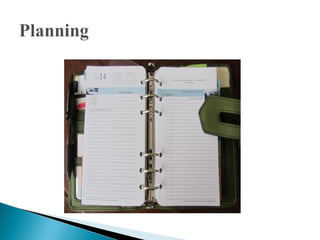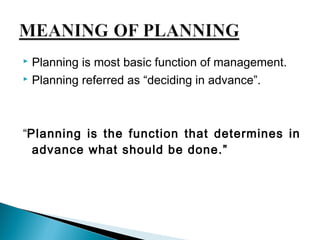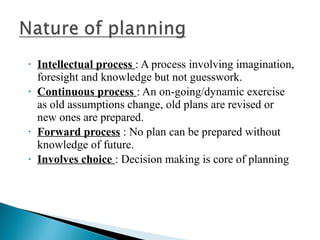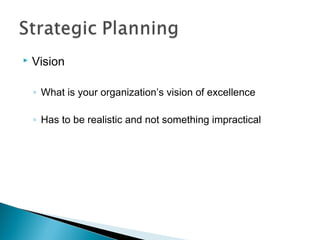Planning is the process of determining objectives and deciding in advance how to achieve them. The document outlines the planning process, including establishing objectives, determining premises and alternatives, evaluating alternatives, selecting a course of action, formulating supporting plans, and reviewing. It also discusses types of plans like strategic and tactical plans. Effective planning focuses attention on objectives, reduces uncertainty, and provides direction to help organizations achieve their goals.




























































